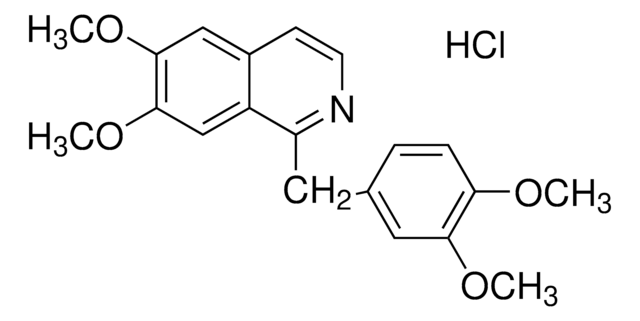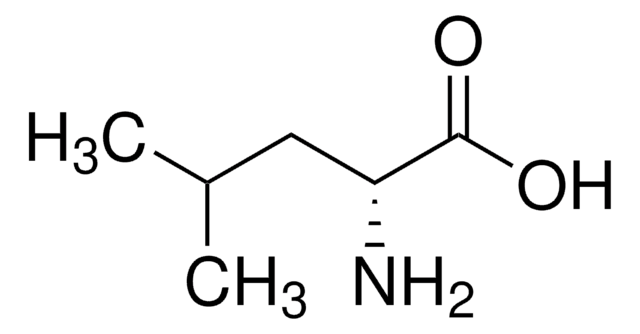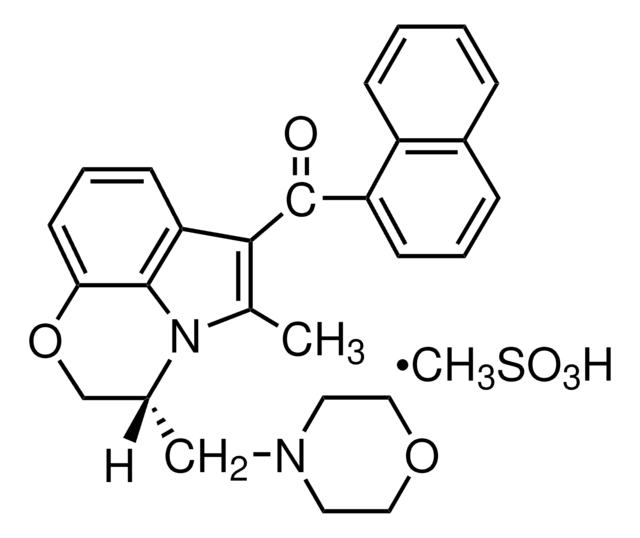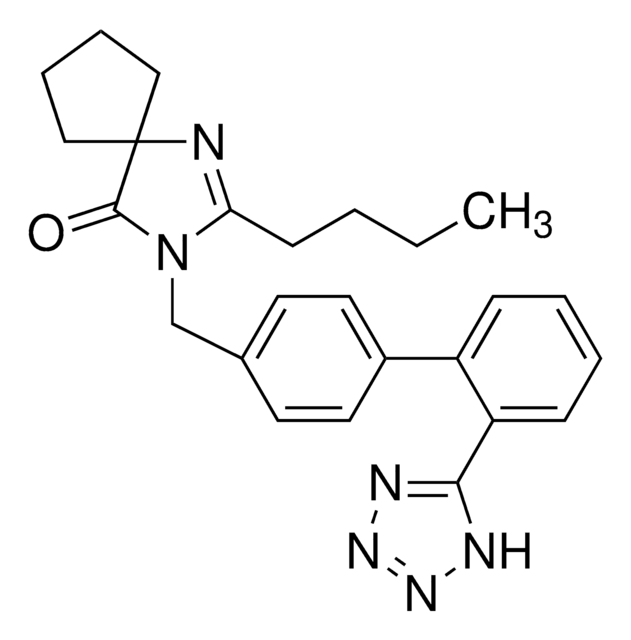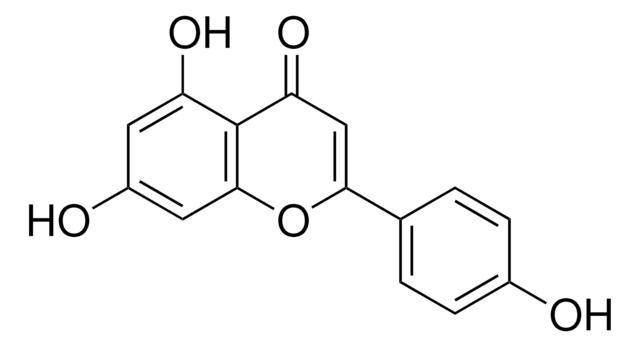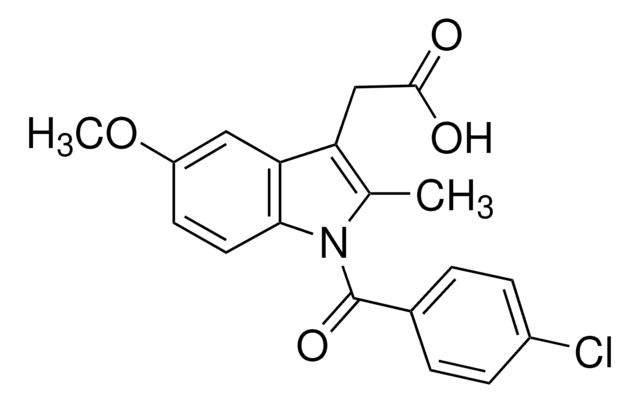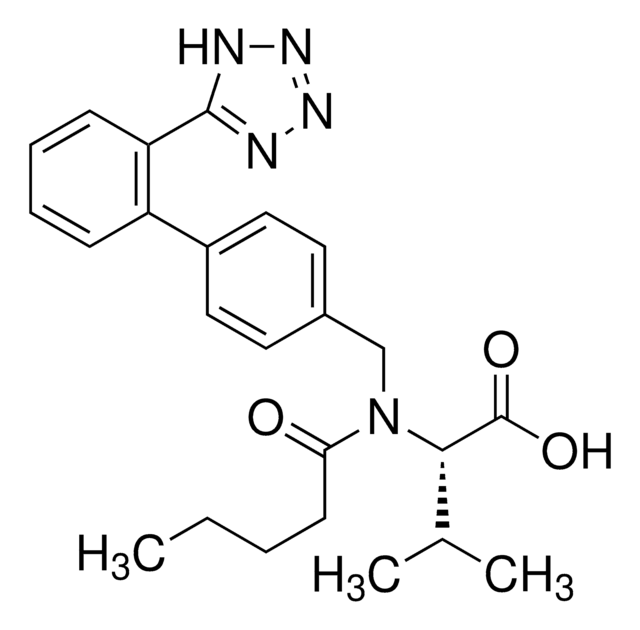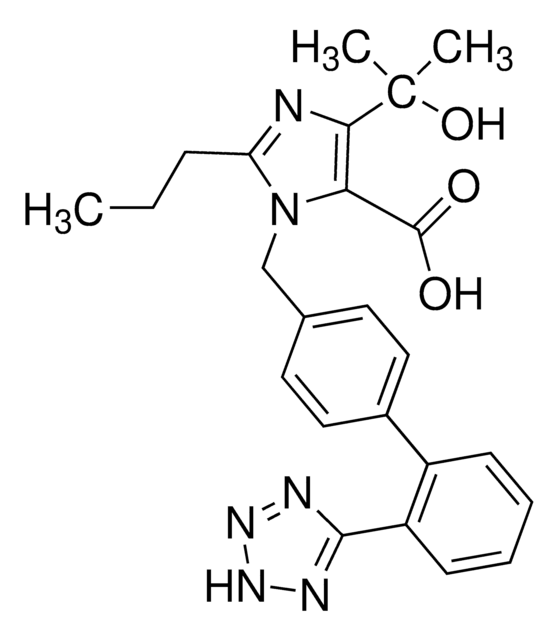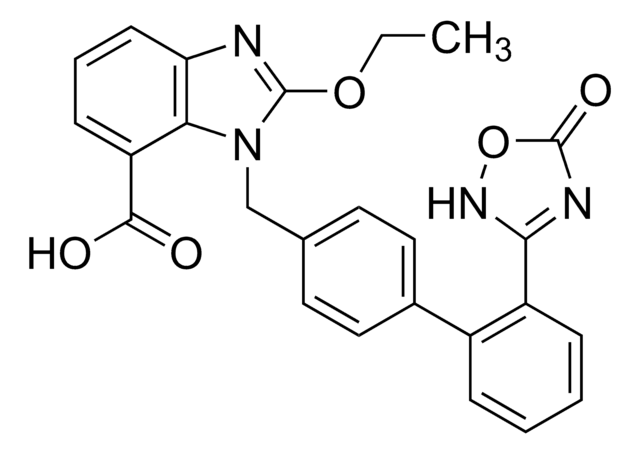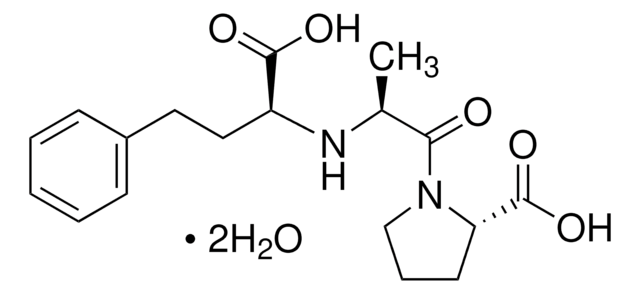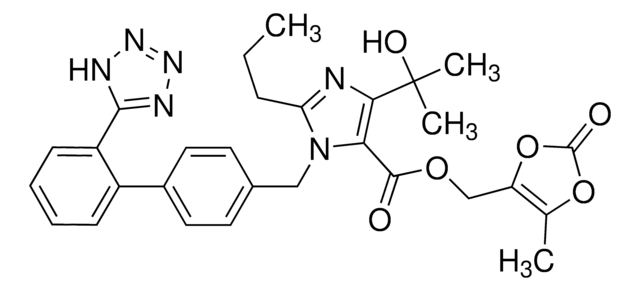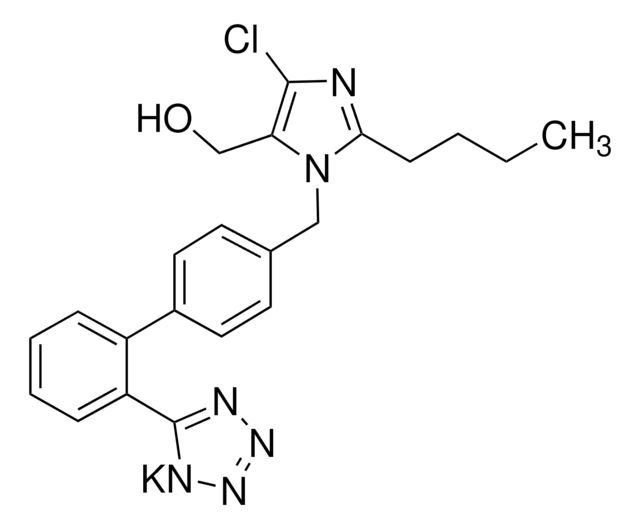すべての画像(1)
About This Item
実験式(ヒル表記法):
C25H28N6O
CAS番号:
分子量:
428.53
MDL番号:
UNSPSCコード:
12352200
PubChem Substance ID:
NACRES:
NA.77
おすすめの製品
アッセイ
≥98% (HPLC)
フォーム
powder
色
white to off-white
溶解性
DMSO: >25 mg/mL
オーガナイザー
Bristol-Myers Squibb
Sanofi Aventis
保管温度
2-8°C
SMILES記法
CCCCC1=NC2(CCCC2)C(=O)N1Cc3ccc(cc3)-c4ccccc4-c5nnn[nH]5
InChI
1S/C25H28N6O/c1-2-3-10-22-26-25(15-6-7-16-25)24(32)31(22)17-18-11-13-19(14-12-18)20-8-4-5-9-21(20)23-27-29-30-28-23/h4-5,8-9,11-14H,2-3,6-7,10,15-17H2,1H3,(H,27,28,29,30)
InChI Key
YOSHYTLCDANDAN-UHFFFAOYSA-N
遺伝子情報
human ... AGTR1(185)
類似した製品をお探しですか? 訪問 製品比較ガイド
詳細
Irbesartan comprises bipentyl-tetrazole side chain. It is an imidazole derivative with high bioavailability and is metabolized by the enzyme cytochrome P450 2C9 isoenzyme in liver to be majorly eliminated by oxidation and glucuronidation.
アプリケーション
Irbesartan has been used as an angiotensin II receptor type 1 (ATR1) blocker in carotid atheroma tissue. It may be used to test its effect on allergic asthma in rat and mice mast cells.
生物化学的/生理学的作用
Irbesartan is an angiotensin II type 1 (AT1) receptor antagonist with antihypertensive activity. It also elicits selective peroxisome proliferator-activated receptor γ (PPARγ)-modulating activity and possesses anti-inflammatory properties. Irbesartan shows protective cardiovascular effects and provides protection against chronic glomerulonephritis.
特徴および利点
This compound is featured on the Angiotensin Receptors page of the Handbook of Receptor Classification and Signal Transduction. To browse other handbook pages, click here.
This compound was developed by Bristol-Myers Squibb and Sanofi Aventis. To browse the list of other pharma-developed compounds, Approved Drugs, and Drug Candidates, click here.
保管分類コード
11 - Combustible Solids
WGK
WGK 3
引火点(°F)
Not applicable
引火点(℃)
Not applicable
適用法令
試験研究用途を考慮した関連法令を主に挙げております。化学物質以外については、一部の情報のみ提供しています。 製品を安全かつ合法的に使用することは、使用者の義務です。最新情報により修正される場合があります。WEBの反映には時間を要することがあるため、適宜SDSをご参照ください。
Jan Code
I2286-10MG:
I2286-VAR:
I2286-50MG:
I2286-BULK:
最新バージョンのいずれかを選択してください:
この製品を見ている人はこちらもチェック
I Van Liefde et al.
Molecular and cellular endocrinology, 302(2), 237-243 (2008-07-16)
Sartans are non-peptide AT(1) receptor antagonists used to treat hypertension and related pathologies. Their effects on the G protein-dependent responses of angiotensin II (Ang II) were the same in vascular tissues and in isolated cell systems. All are competitive but
Marie Hudson et al.
Pharmacotherapy, 27(4), 526-534 (2007-03-27)
To examine the class effect of angiotensin II receptor blockers (ARBs) on mortality in patients with heart failure who were aged 65 years or older. Retrospective population-based study. Administrative database that stores information on hospital discharge summaries for the Canadian
Guru Prasad Sharma et al.
International journal of radiation oncology, biology, physics, 113(1), 177-191 (2022-01-31)
Radiation-induced lung injury is a major dose-limiting toxicity for thoracic radiation therapy patients. In experimental models, treatment with angiotensin converting enzyme (ACE) inhibitors mitigates radiation pneumonitis; however, the mechanism of action is not well understood. Here, we evaluate the direct
David V Erbe et al.
Vascular pharmacology, 45(3), 154-162 (2006-06-13)
Elevated blood pressure and insulin resistance are strongly associated in patients. We explored the potential for the anti-hypertensive angiotensin II type 1-receptor (ATR(1)) antagonists to improve insulin sensitivity through modulation of the nuclear receptor PPARgamma, in vitro and in vivo
Zhongqi Dong et al.
Molecular pharmaceutics, 10(3), 1008-1019 (2013-01-24)
The hepatic bile acid uptake transporter sodium taurocholate cotransporting polypeptide (NTCP) is less well characterized than its ileal paralog, the apical sodium dependent bile acid transporter (ASBT), in terms of drug inhibition requirements. The objectives of this study were (a)
ライフサイエンス、有機合成、材料科学、クロマトグラフィー、分析など、あらゆる分野の研究に経験のあるメンバーがおります。.
製品に関するお問い合わせはこちら(テクニカルサービス)